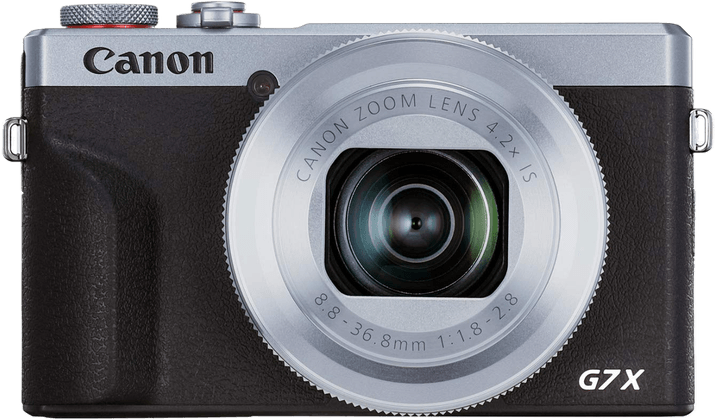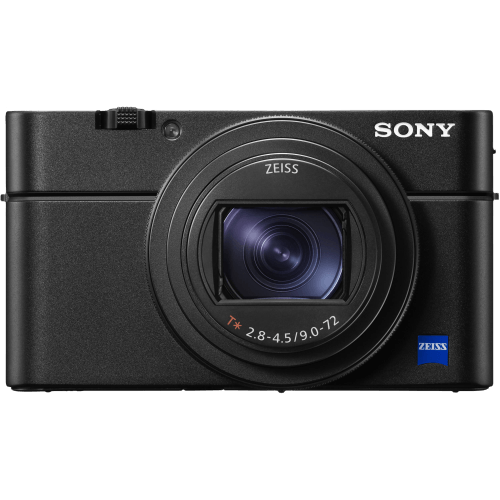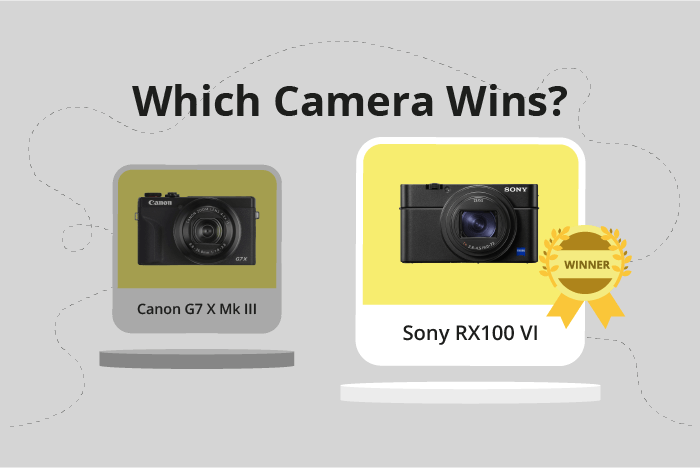Canon PowerShot G7 X Mark III vs Sony Cyber-shot RX100 VI Comparison
Canon PowerShot G7 X Mark III

Sony Cyber-shot RX100 VI

The Sony Cyber-shot RX100 VI emerges as the winner in this comparison, scoring 69/100, while the Canon PowerShot G7 X Mark III trails behind with a score of 59/100. Both cameras are compact in size, with the Canon measuring 105 x 61 x 41mm and weighing 0.67lbs, and the Sony measuring 102 x 58 x 43mm and weighing 0.66lbs.
The Sony RX100 VI has a higher score due to its overall better performance. Launched in 2018 at a price of $1200, it offers superior features compared to its competitor. However, the Canon G7 X Mark III, released in 2019 at $749, has the advantage of being more affordable.
Taking these factors into account, the Sony Cyber-shot RX100 VI is the better choice for those seeking optimal camera performance, while the Canon PowerShot G7 X Mark III is a budget-friendly option that still delivers decent results.
Canon PowerShot G7 X Mark III vs Sony Cyber-shot RX100 VI Overview and Optics
The Sony Cyber-shot RX100 VI wins the optics comparison with a score of 67/100, while the Canon PowerShot G7 X Mark III scores 57/100. Both cameras share several specifications, such as 20-megapixel resolution, CMOS sensor type, 1″ sensor size, fixed lens mount, and image stabilization.
The Sony RX100 VI has a higher DXOMARK score for the sensor, 82 compared to Canon G7 X Mark III’s 58. This indicates that the Sony camera has a better sensor performance, which could lead to improved image quality. Furthermore, the Sony camera uses the Bionz X processor, which is known for its fast and efficient processing capabilities.
On the other hand, the Canon G7 X Mark III has a faster shooting speed at 30 frames per second compared to Sony RX100 VI’s 24 frames per second. This advantage allows the Canon camera to capture fast-moving subjects more effectively. However, the Canon G7 X Mark III uses the Digic 8 processor, which may not be as fast or efficient as the Bionz X processor in the Sony camera.
Considering these points, the Sony Cyber-shot RX100 VI is the better camera in terms of optics due to its higher DXOMARK sensor score and efficient processor. However, the Canon PowerShot G7 X Mark III offers a faster shooting speed, making it suitable for capturing fast-moving subjects. Ultimately, the choice between these two cameras will depend on the user’s specific needs and priorities.
Canon PowerShot G7 X Mark III vs Sony Cyber-shot RX100 VI Video Performance
The Canon PowerShot G7 X Mark III outperforms the Sony Cyber-shot RX100 VI in video capabilities with a score of 91 out of 100, compared to the Sony’s 77. Both cameras share similar specifications in terms of maximum video resolution (4K) and dimensions (3840 x 2160). Additionally, they both have a maximum video frame rate of 120fps.
However, the Canon G7 X Mark III has a clear advantage with its built-in time-lapse functionality, which the Sony RX100 VI lacks. This feature allows the Canon camera to capture a series of images over a period and then combine them into a single video, showcasing the passage of time in a creative and visually appealing manner. The absence of this feature in the Sony Cyber-shot RX100 VI limits its video capabilities and creative potential.
On the other hand, the Sony RX100 VI does not have any significant advantages over the Canon G7 X Mark III in video capabilities. Both cameras have the same maximum video resolution, dimensions, and frame rate. This means that the Canon camera’s higher video score is primarily due to its additional time-lapse functionality.
Considering the shared specifications and the Canon G7 X Mark III’s added time-lapse feature, it is evident that the Canon camera is superior in video capabilities. The Sony RX100 VI, while offering comparable video quality in terms of resolution and frame rate, falls short due to its lack of time-lapse functionality. Therefore, for those seeking a camera with advanced video capabilities, the Canon PowerShot G7 X Mark III is the better choice.
Canon PowerShot G7 X Mark III vs Sony Cyber-shot RX100 VI Features and Benefits
The Sony Cyber-shot RX100 VI outperforms the Canon PowerShot G7 X Mark III in features with a score of 83/100, compared to the Canon’s 70/100. Both cameras share several specifications, making them suitable options for various photography needs.
Common features between the two cameras include a 3-inch touchscreen, flip screen, WIFI, and bluetooth capabilities. These shared specifications offer users convenience and ease of use when capturing and sharing images.
The Sony Cyber-shot RX100 VI excels with a higher screen resolution of 1228800 dots, giving users a clearer and more detailed display. Additionally, this camera has GPS functionality, allowing photographers to geotag their images and better organize their photo collections.
While the Canon PowerShot G7 X Mark III falls short in overall features, it still provides users with a solid set of specifications. With a screen resolution of 1040000 dots, its display is still of high quality, though not as sharp as the Sony’s. The lack of GPS functionality may be a drawback for some users, but it does not hinder the camera’s overall performance.
Comparing the two cameras, the Sony Cyber-shot RX100 VI outshines the Canon PowerShot G7 X Mark III in terms of features, making it the better choice for photographers seeking a more comprehensive set of specifications. However, the Canon PowerShot G7 X Mark III remains a viable option for those who prioritize simplicity and a solid set of features.
Canon PowerShot G7 X Mark III vs Sony Cyber-shot RX100 VI Storage and Battery
The Sony Cyber-shot RX100 VI triumphs over the Canon PowerShot G7 X Mark III in storage and battery with a score of 29/100, compared to Canon’s 27/100. Both cameras share similarities, such as having one memory card slot, accepting SD/SDHC/SDXC cards, and offering USB charging.
The RX100 VI outperforms the G7 X Mark III in battery life, providing 250 shots per charge, while the Canon manages 235 shots. Additionally, the Sony camera accepts Memory Stick Pro Duo/Pro-HG Duo cards, giving users more storage options.
Although the Canon G7 X Mark III falls short in battery life, it still offers a decent number of shots and is compatible with UHS-I SD cards, ensuring fast data transfer speeds.
To conclude, the Sony Cyber-shot RX100 VI is slightly superior in storage and battery performance, providing longer battery life and more memory card options. However, the Canon PowerShot G7 X Mark III remains a solid choice with its UHS-I compatibility and satisfactory battery life.
Canon PowerShot G7 X Mark III vs Sony Cyber-shot RX100 VI – Our Verdict
Are you still undecided about which camera is right for you? Have a look at these popular comparisons that feature the Canon PowerShot G7 X Mark III or the Sony Cyber-shot RX100 VI:
- Canon PowerShot G7 X Mark III vs Sony Cyber-shot DSC-RX100 VII
- Canon PowerShot G7 X Mark II vs PowerShot G7 X Mark III
- Canon PowerShot G5 X Mark II vs PowerShot G7 X Mark III
- Canon EOS R50 vs Sony Cyber-shot RX100 VI
- Canon PowerShot G7 X Mark III vs Panasonic Lumix ZS200 (TZ200)
- Canon PowerShot G7 X Mark III vs Ricoh GR IIIx

